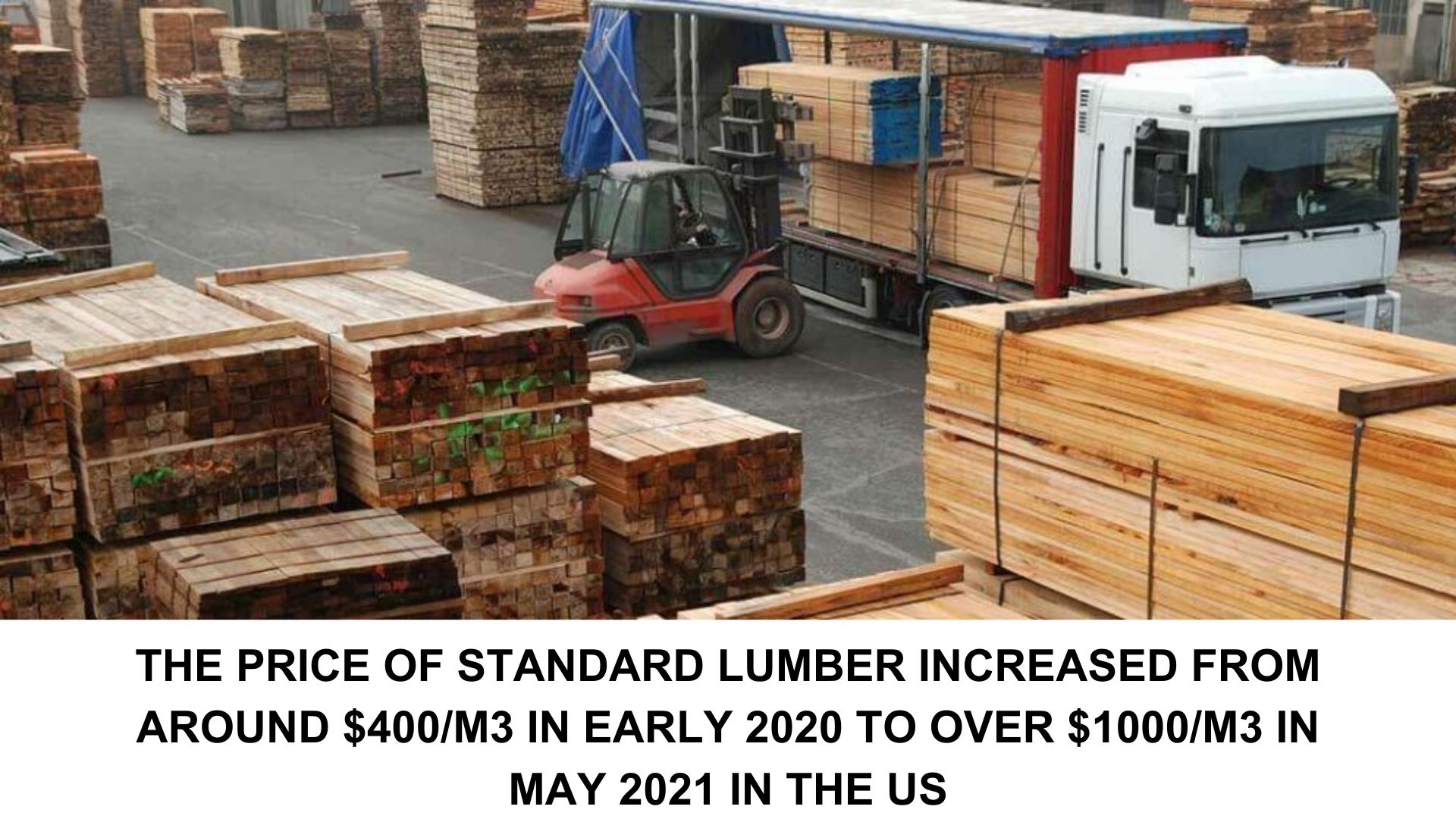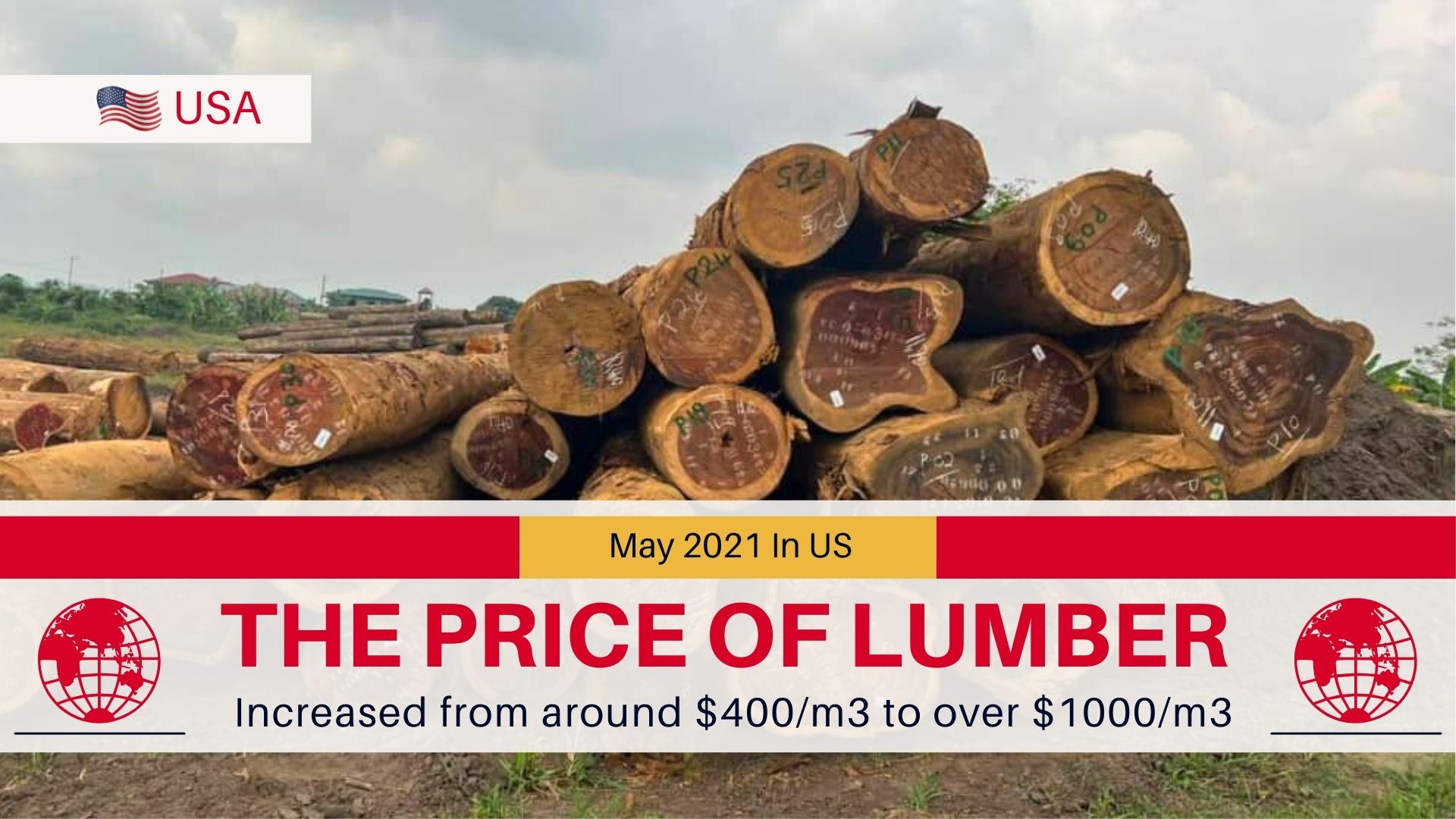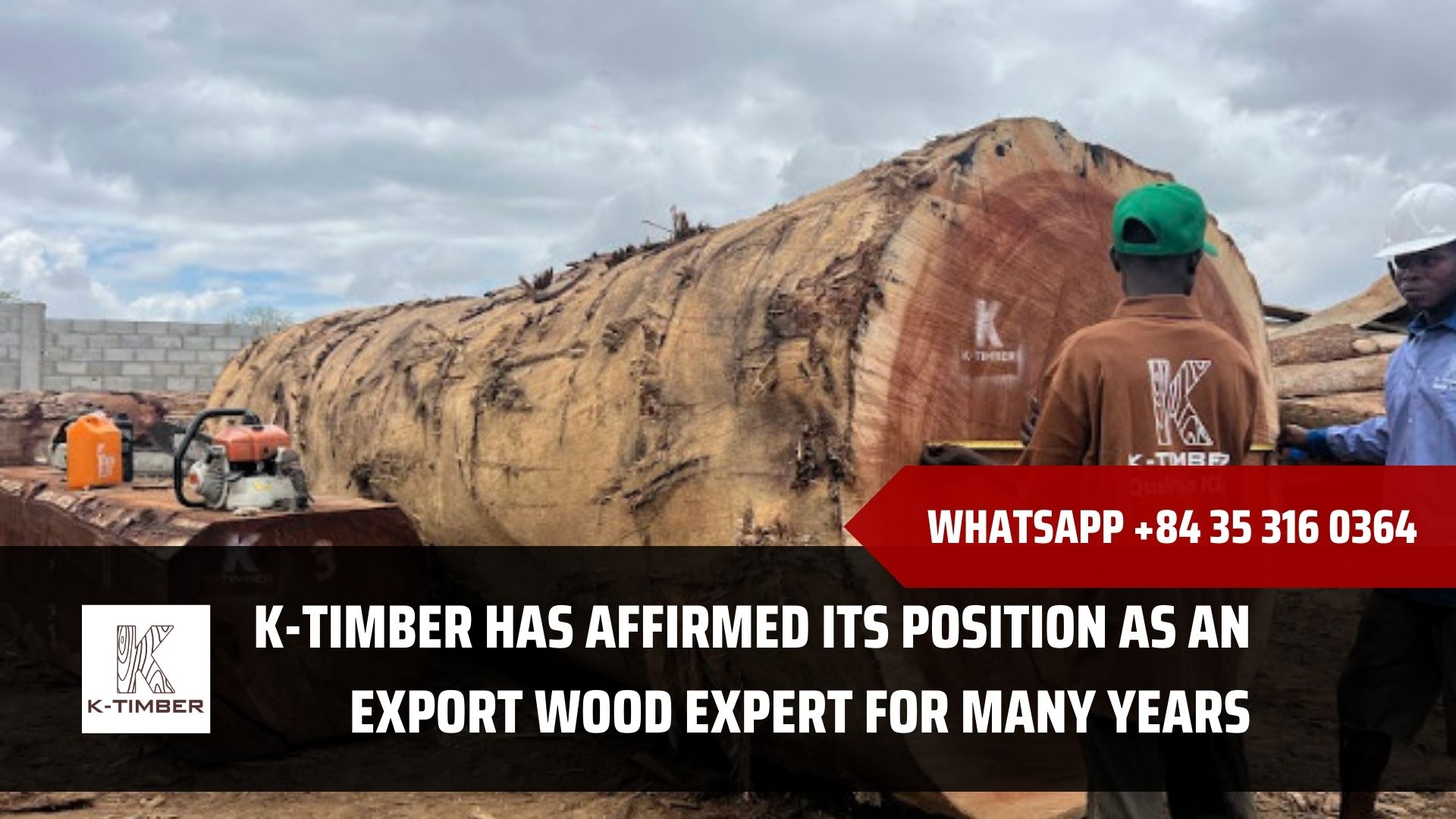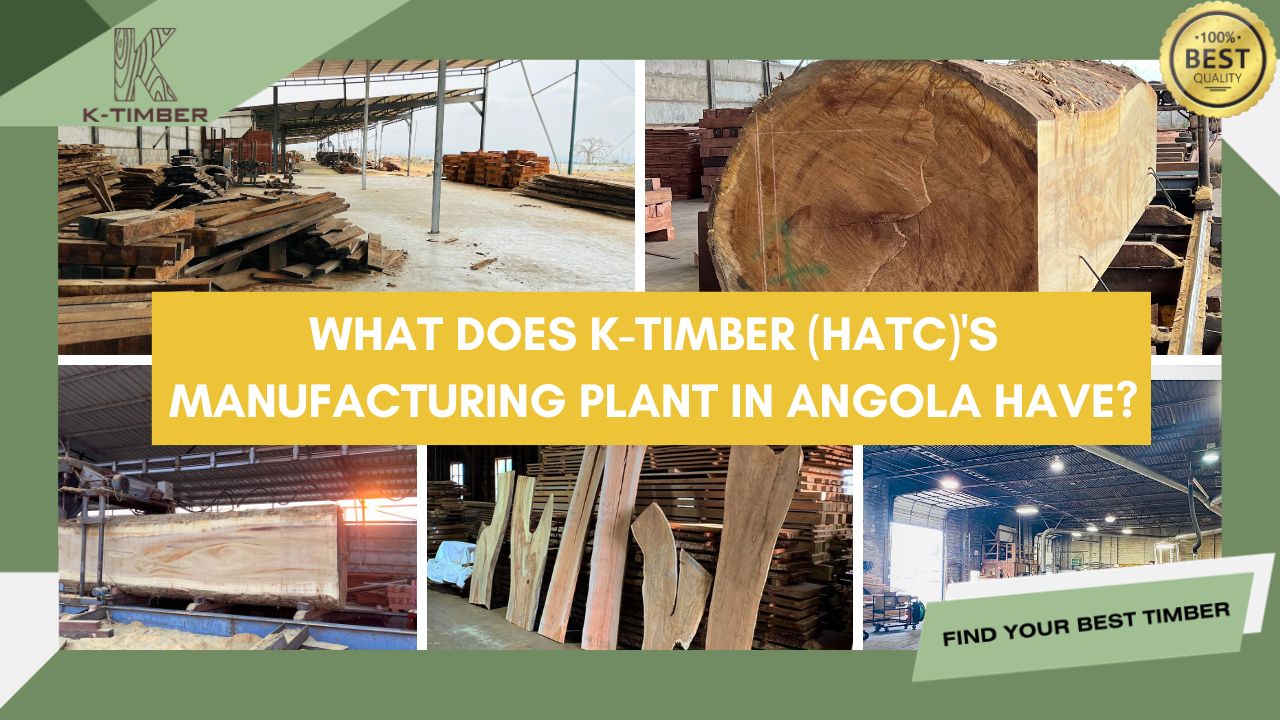The continuous fluctuation and increasing price of wood is a burning issue that many businesses and investors have to face, not only for African wood products. This situation not only affects profits but also impacts the competitiveness and development of the market. In this article, K-TIMBER will analyze the main reasons leading to wood price fluctuations and share tips to help businesses “hunt” for cheap, quality wood. Let’s find out!

Table of Contents
Current Status of Fluctuating African Wood Prices
As of late April 2023, the fluctuating wood prices reflect the global market instability, particularly due to factors such as the COVID-19 pandemic, climate change, and trade conflicts.
In 2020 and 2021, wood prices experienced a strong cycle of fluctuation, with lumber prices skyrocketing to record highs in May 2021. Specifically, the price of standard lumber increased from around $400/m3 in early 2020 to over $1000/m3 in May 2021 in the US. However, after that peak period, wood prices began to decline gradually from late 2021 and continued to fluctuate in 2022 and 2023. These price fluctuations have affected not only the construction industry but also the wood manufacturing industry and the export market.

According to a report from the International Forestry Institute in the first quarter of 2023, African wood prices have seen some significant changes, reflecting the global supply and demand situation. Specifically, the price of Doussie wood has fluctuated from around $600/m3 to $800/m3 by the end of April 2023. Similarly, Sapele wood also recorded a price of around $550/m3, reflecting some of the market volatility.
Overall Assessment: In the future, wood prices may continue to fluctuate depending on various macroeconomic factors and the global situation. Therefore, it requires each enterprise as well as the wood industry to constantly adapt to the rapid changes in the market.
Causes of Wood Price Fluctuations
Wood prices have been continuously fluctuating for many years now, affected by various factors that have caused the price of lumber to skyrocket to an alarming level. Here are some of the reasons why lumber prices have increased:
Supply and Demand Factors
Supply and demand are the two most fundamental factors that determine the price of wood. As the demand for African wood continues to grow due to the development of the construction and furniture industries, the price of lumber has increased. Specifically, many sawmills closed during the pandemic, causing housing demand to surge, leading to a wood supply that could not meet current demand.
In the first 13 months of the pandemic, lumber prices steadily increased from $200 per 1,000 board feet to over $1,000. This led to a significant increase in the cost of buying a home, with many potential homebuyers having to pay over $35,000 more than before the pandemic.
According to the 2022 financial report, lumber prices in the US increased by 20% compared to the same period last year due to the strong demand for housing construction after the pandemic. However, this price is likely to decrease rapidly as the market becomes saturated and a recession occurs in 2023.

Wildfires and Natural Disasters
In 2021 and 2022, the Western United States and Canada faced some of the largest wildfires in history. In 2021 alone, at least 5.6 million acres burned in the US. Canada, during the same time, saw over 10 million acres burned. These devastating wildfires have had a significant impact on lumber prices globally. According to data from the United States Department of Agriculture (USDA), lumber prices in the US increased by nearly 50% from the beginning of 2021 to mid-year, peaking in May at a record high. This reflects the severity of the lumber supply shortage caused by the wildfires, coupled with high demand from the construction and home improvement sectors.
However, the issue goes beyond just price increases. The lumber supply shortage due to wildfires has also put increased pressure on sustainable wood sources and accelerated the search for alternative building materials. This, in the long run, could drive innovation in the construction industry and reduce reliance on natural wood.

Government Tariffs
Governments often impose tariffs to put pressure on imported goods and control the flow of goods into a country. At the same time, stricter environmental regulations can also limit the supply of wood, while import and export tariffs can affect wood prices on the global market.
A typical example is the trade relationship between Canada and the US. Specifically, in 2017, the US imposed an average tariff of about 20% on lumber from Canada, which contributed to the record high lumber prices in the US in 2018.
Tips for Buying Wood at a Low Price
With the constant change in global wood prices, buying wood at a reasonable price is a challenge for businesses worldwide today. With over 20 years of experience in the wood import and export industry and working with many customers around the world, K-TIMBER will share with you some tips for buying cheap wood during times of strong price fluctuations.
Understanding the Composition of Wood Prices
The price of wood depends not only on the raw material cost but also on various other factors such as production, transportation, and management fees. Raw wood material costs can vary depending on the type of wood, its origin, and market conditions. Additionally, transportation costs can make up a significant portion of the final selling price, especially for wood imported from long distances.
To access affordable and stable wood sources, you can consider working with suppliers like K-TIMBER. With our successful export experience to over 30 countries worldwide, we offer wood products at 20% lower than the market price by optimizing production costs and distribution networks.
Besides optimizing production and transportation costs, K-TIMBER emphasizes sourcing wood from sustainable sources with forest management certification (FSC or PEFC). While the purchase price of sustainable wood raw materials is higher than uncertified materials, K-TIMBER has negotiated preferential prices through long-term partnerships and bulk purchases, reducing raw material costs by 5% compared to the market price.

Buying During Low Season
Another tip that K-TIMBER wants to share with you to buy cheap wood is to choose to buy during the low season. Typically, at the end of the year or the beginning of the new year, the market often sees a decrease in demand for wood due to fewer new construction projects being started. As a result, wood prices can drop from 10% to 20% compared to the average price of the year, according to data from the International Wood and Forest Products Association.
Look for a Reputable Supplier
Finally, finding a reputable supplier is an important factor that determines the quality and price of wood. A reputable supplier not only provides wood with clear origins and guaranteed quality but also has a transparent and stable price policy. You can search for supplier information through forums, review websites, or consult opinions from people who have made purchases.
Emerging as one of the world’s leading African wood suppliers, K-TIMBER has affirmed its position as an export wood expert for many years. At K-TIMBER, we provide a variety of wood types according to FAS standards such as Iroko, Sapele, Sipo, Eucalyptus, Acajou, Pachyloba, Doussie, etc at the most competitive prices on the market.
Furthermore, K-TIMBER complies with international standards for timber exploitation and trade, including Forest Stewardship Council (FSC) and CITES regulations, ensuring customers receive quality wood products. quality, stability. To receive detailed information and wood price quotes, please contact K-TIMBER immediately at Whatsapp +84 35 316 0364.

Contact information at K-TIMBER
- ADDRESS VIET NAM (K-TIMBER): 169 Nguyen Ngoc Vu street, Cau Giay District, Hanoi.
- Phone: (+84) 83333391 (Whatsapp)
- Email: [email protected]





![[K-Timber] Blog Post Boder](https://k-timbers.com/wp-content/uploads/2024/07/K-Timber-Blog-Post-Boder-2.png)




![[K-Timber] Blog Post Boder](https://k-timbers.com/wp-content/uploads/2024/06/K-Timber-Blog-Post-Boder.jpg)